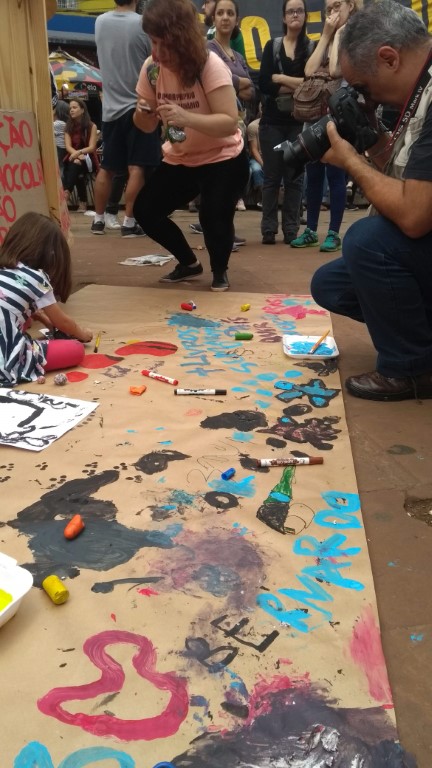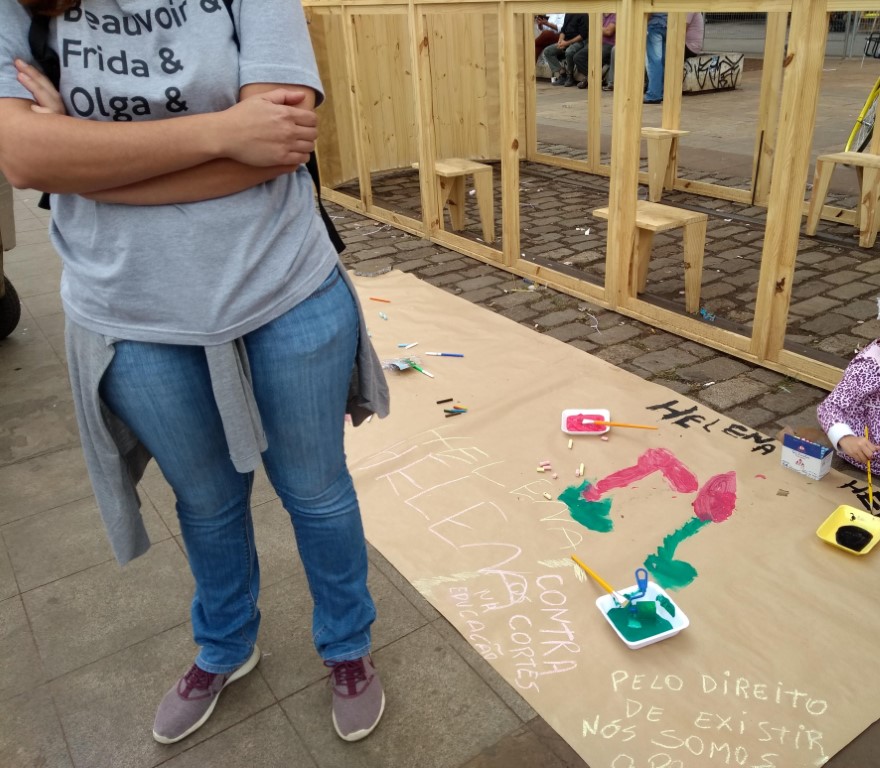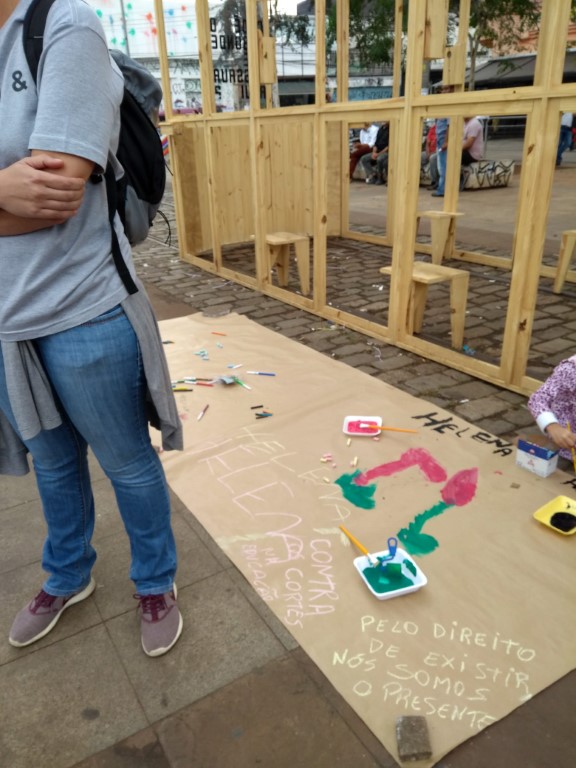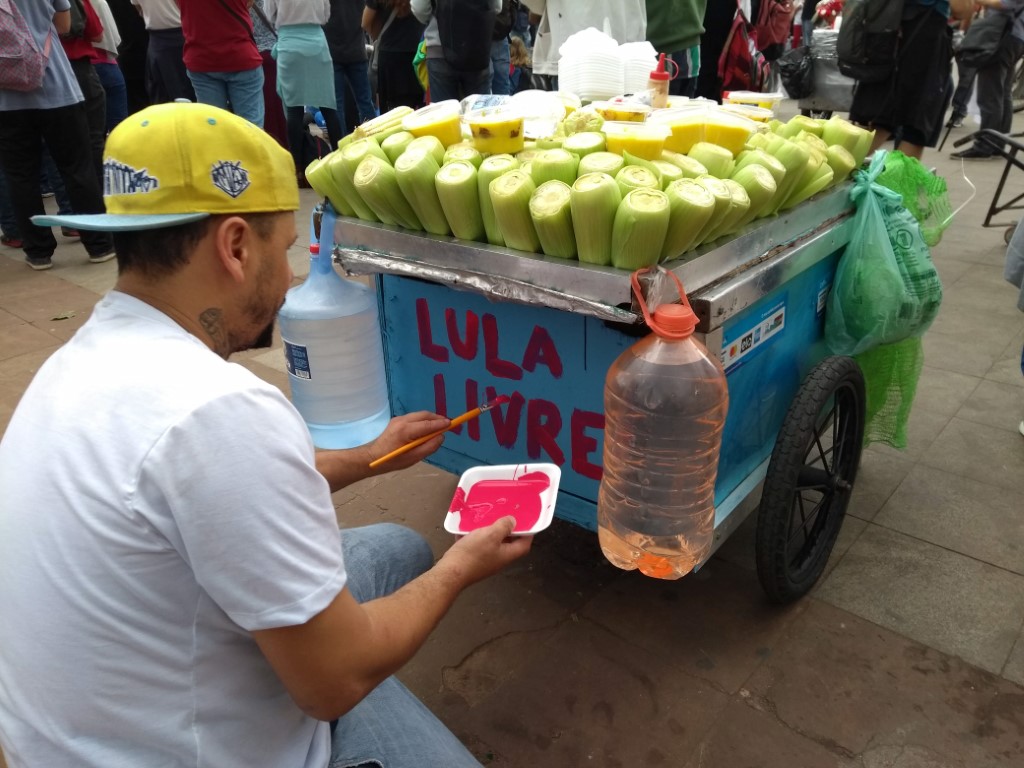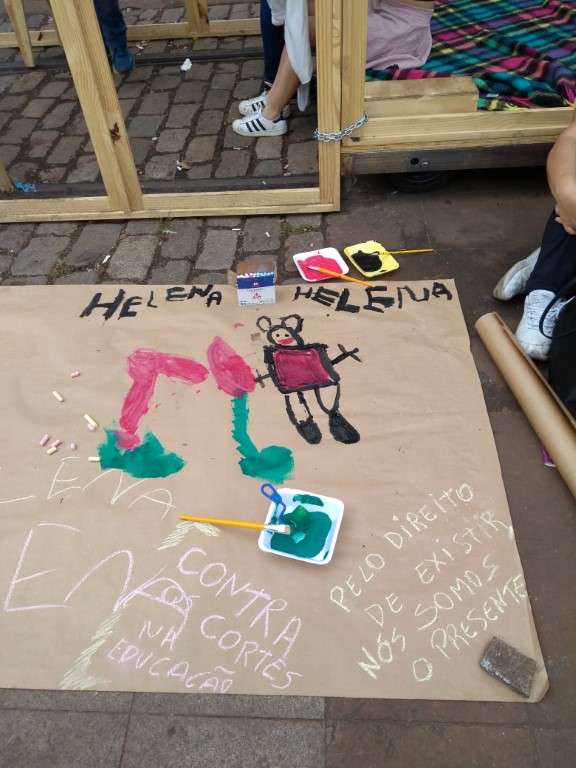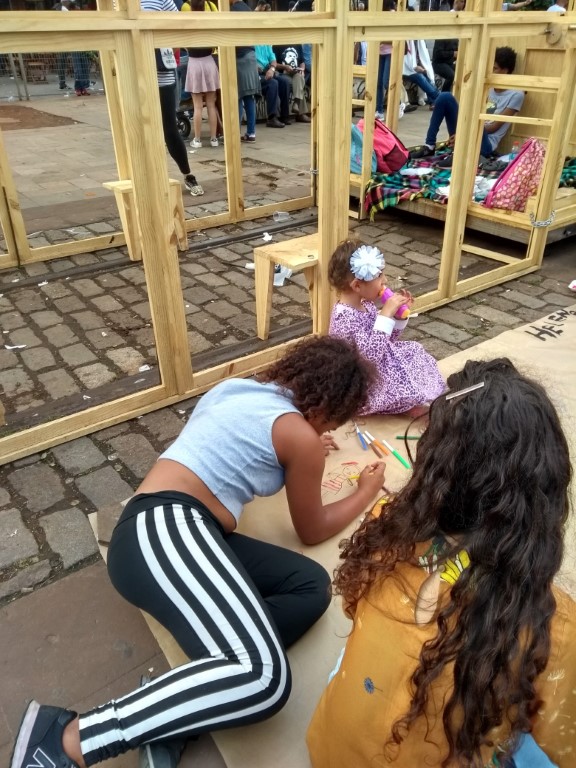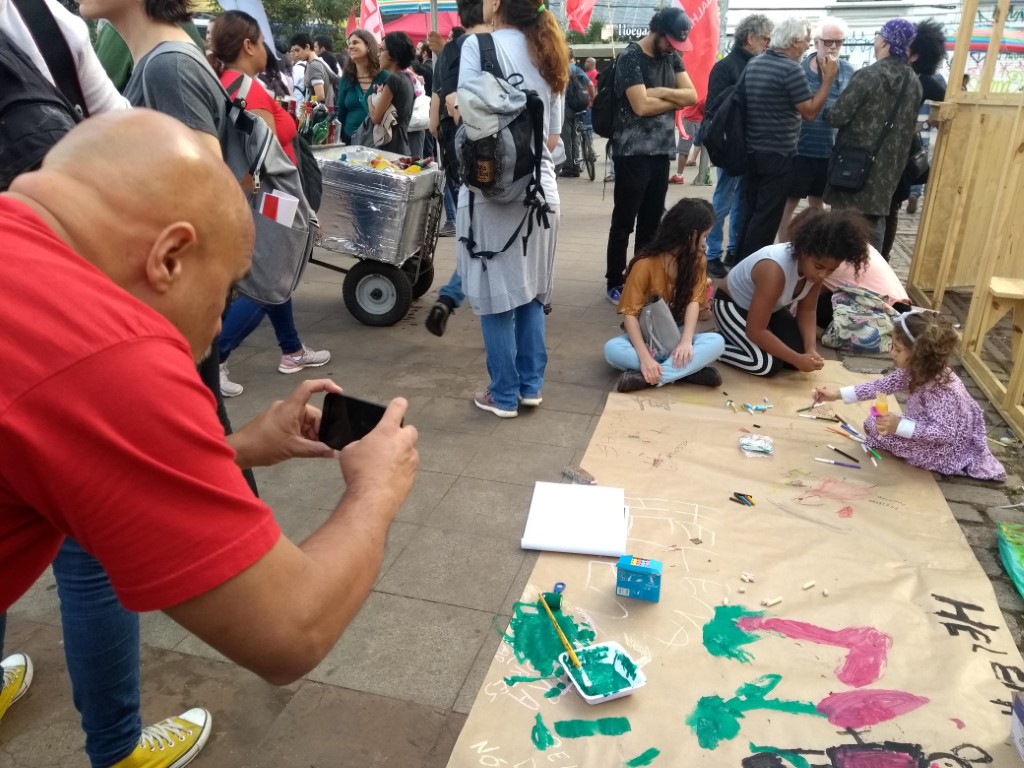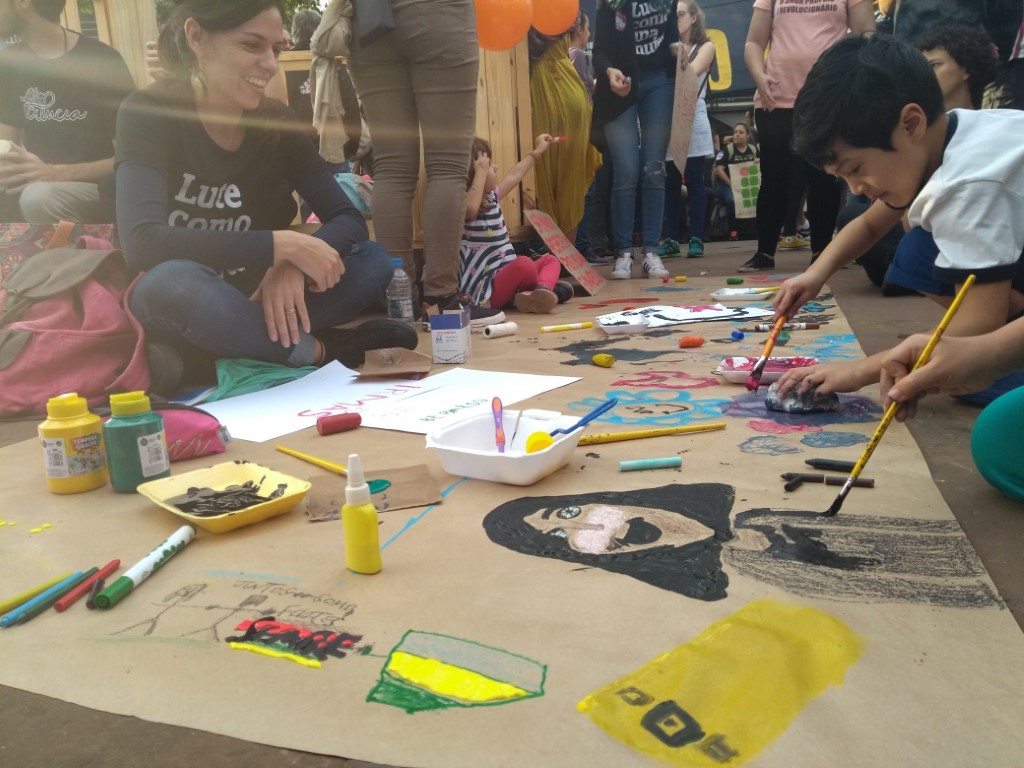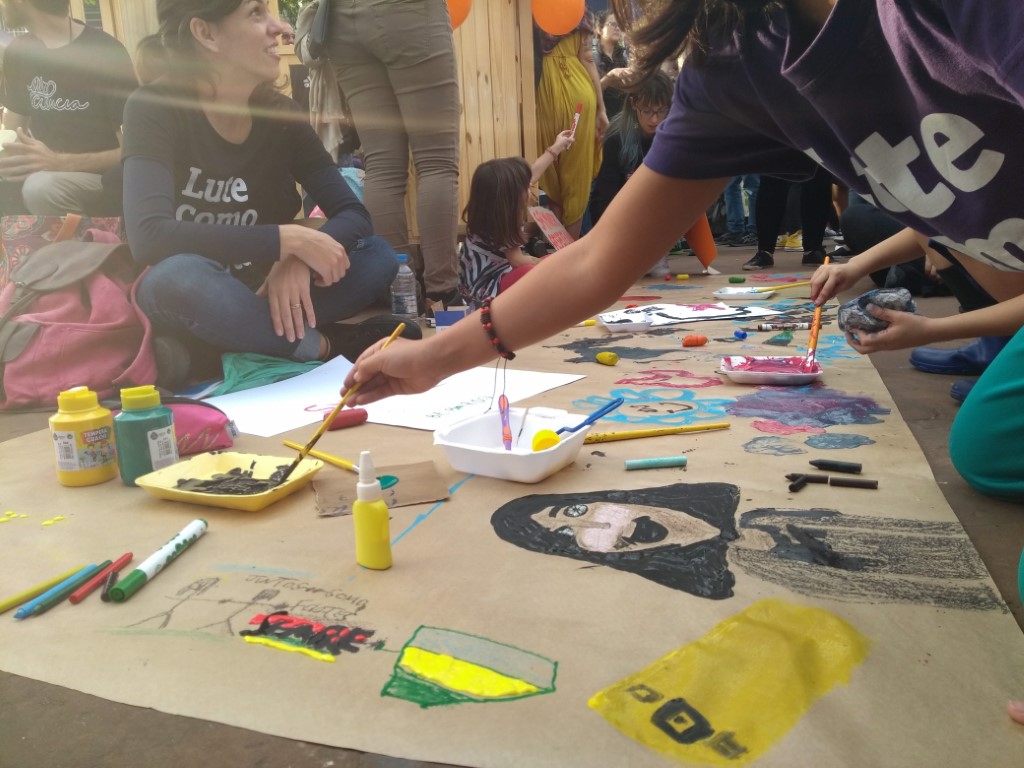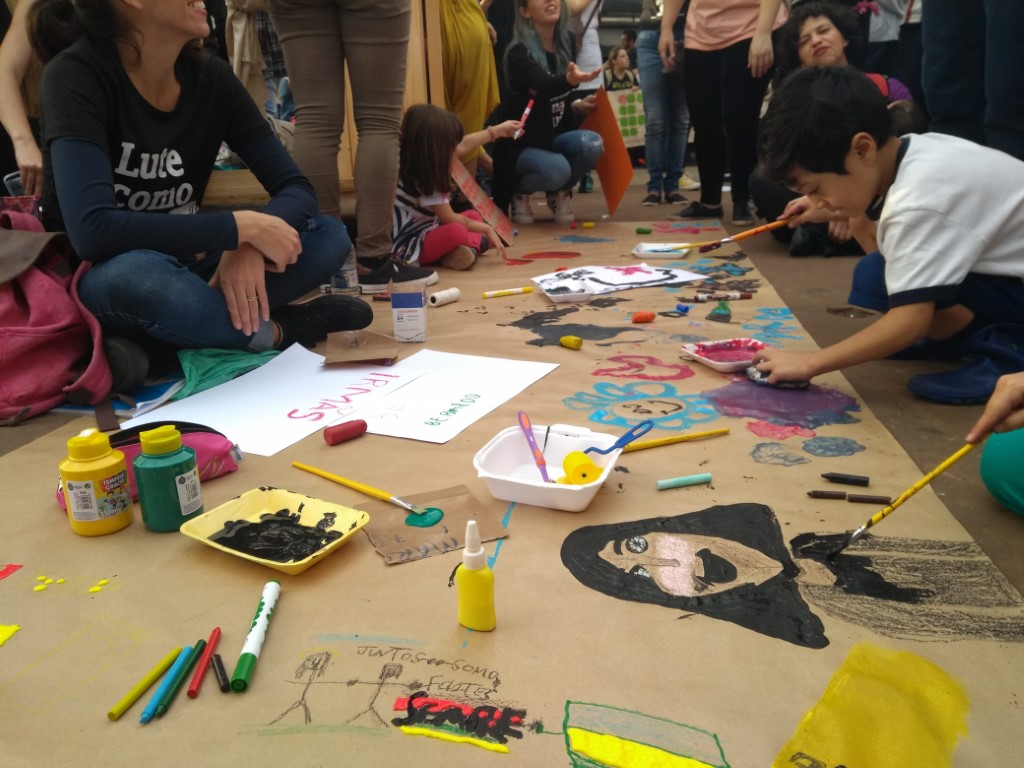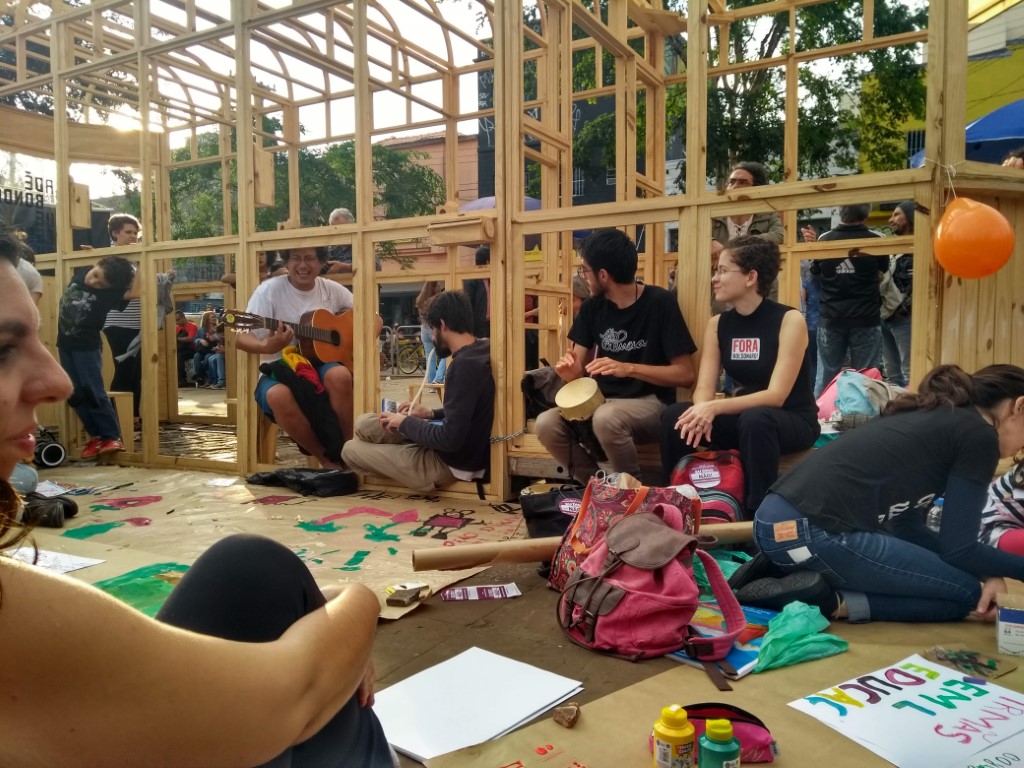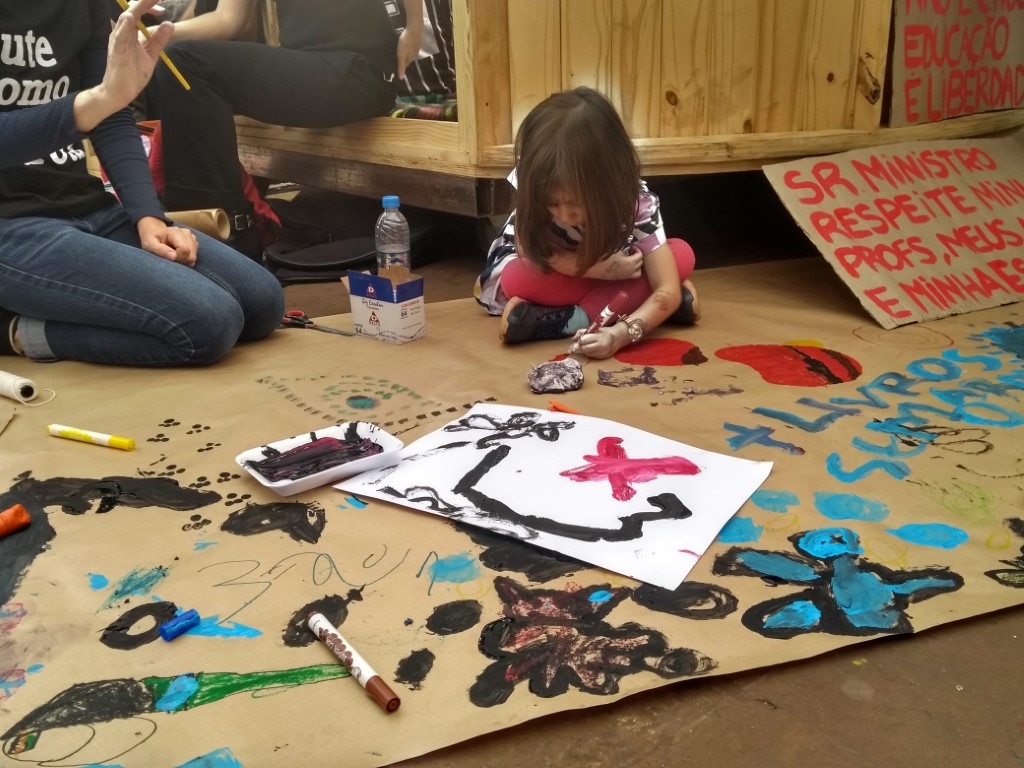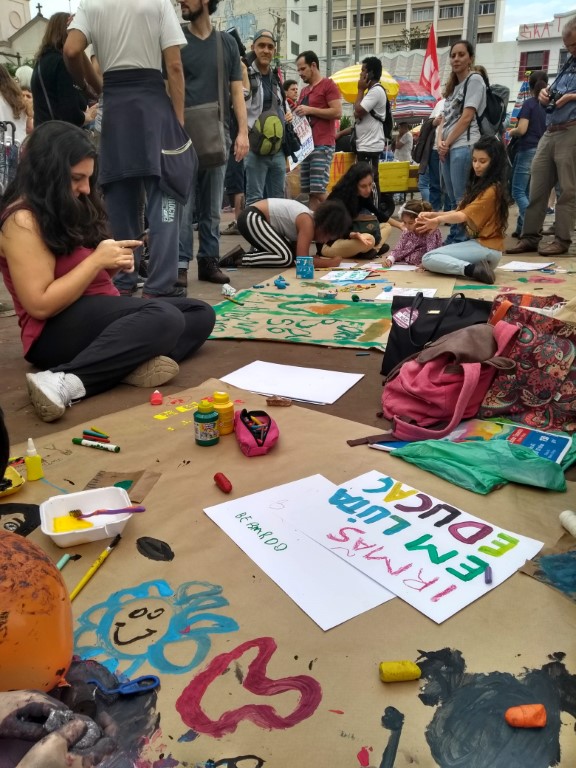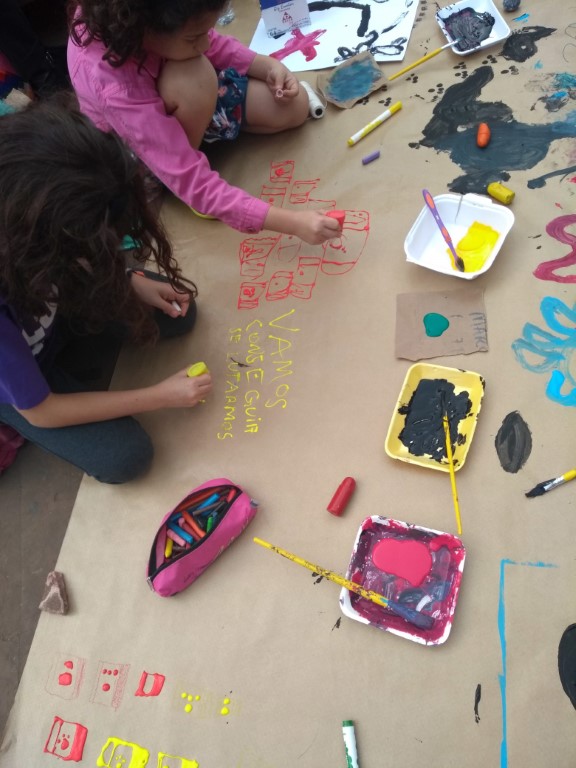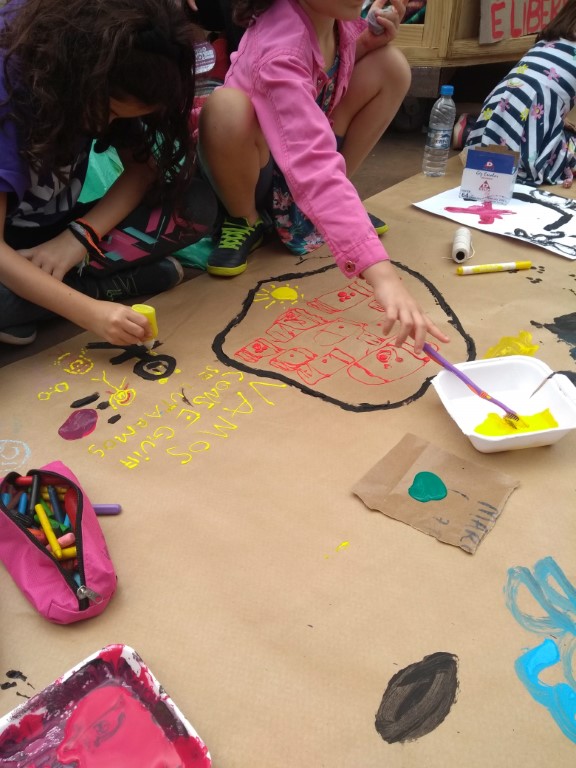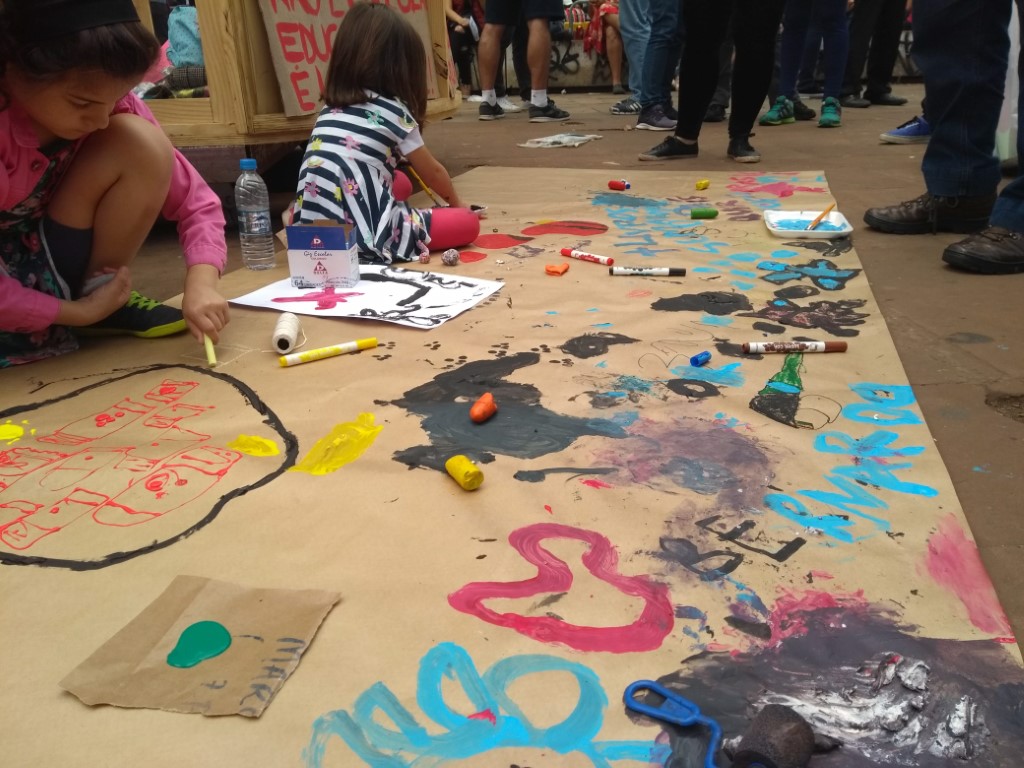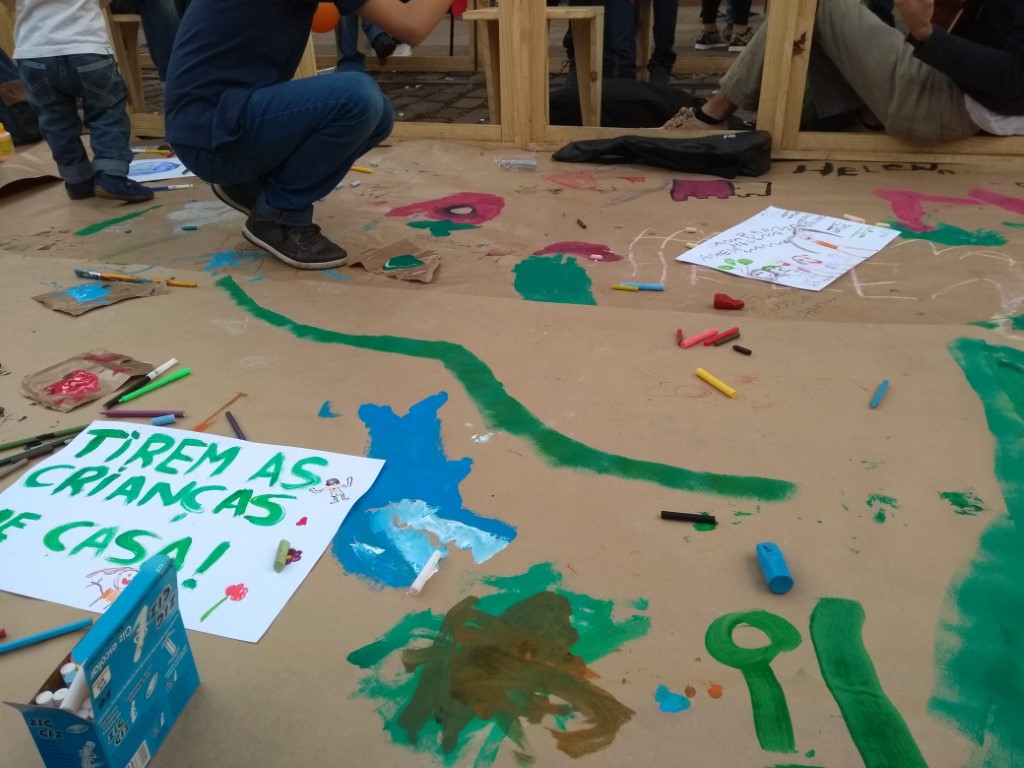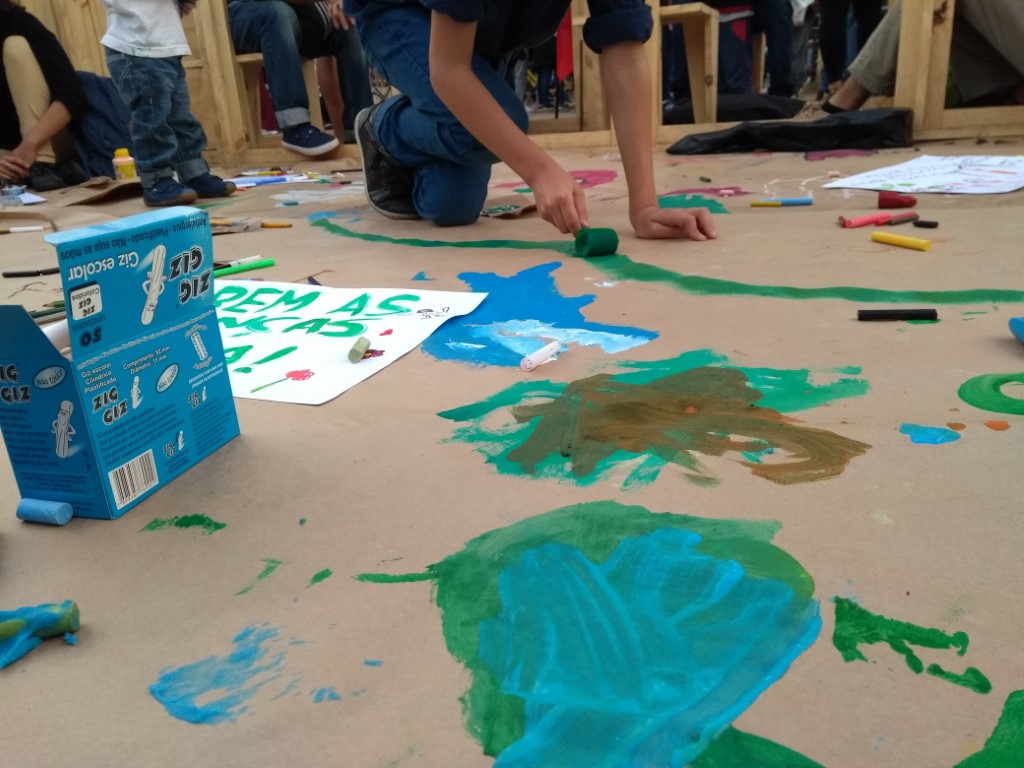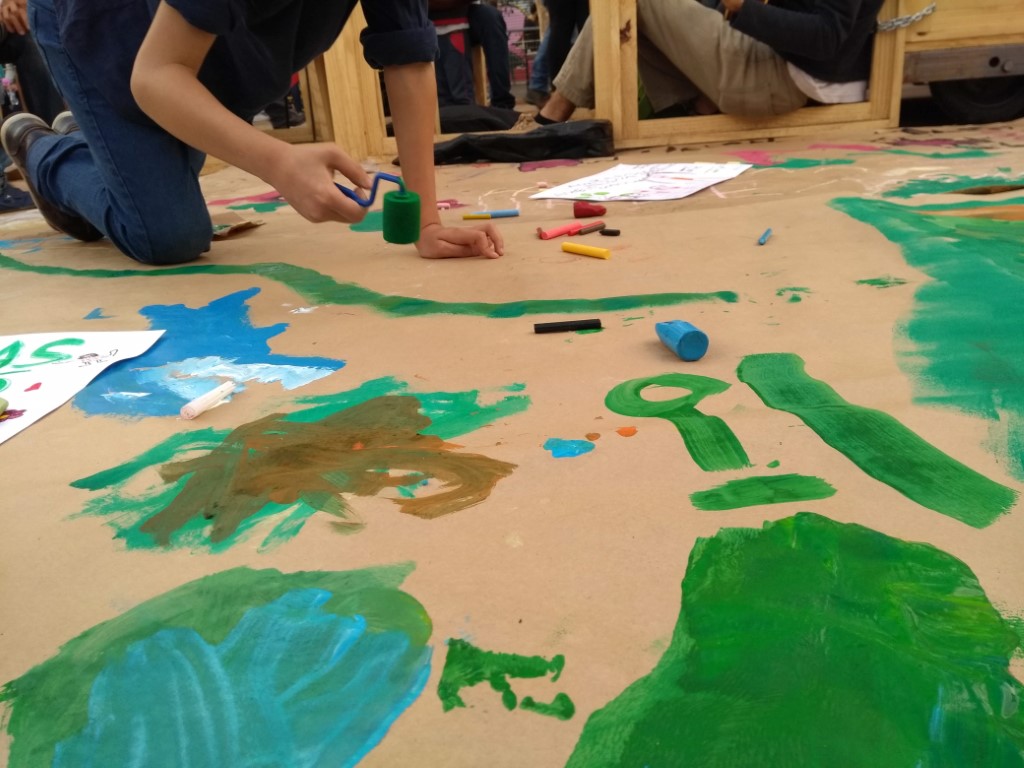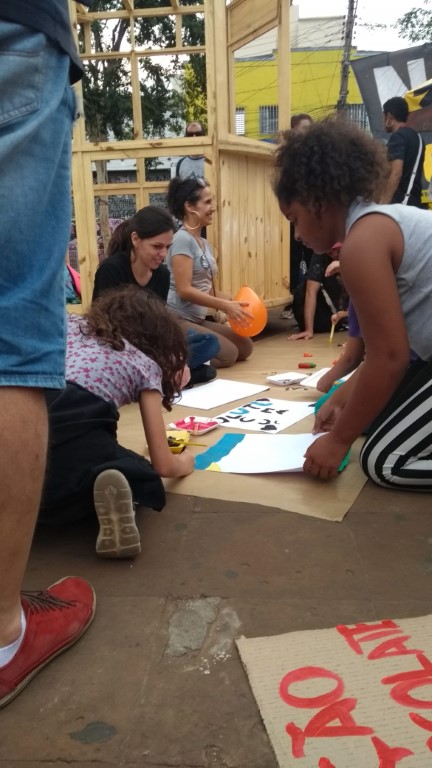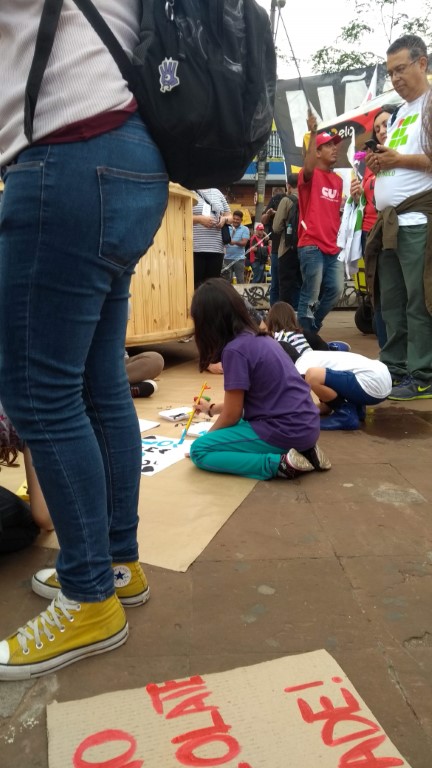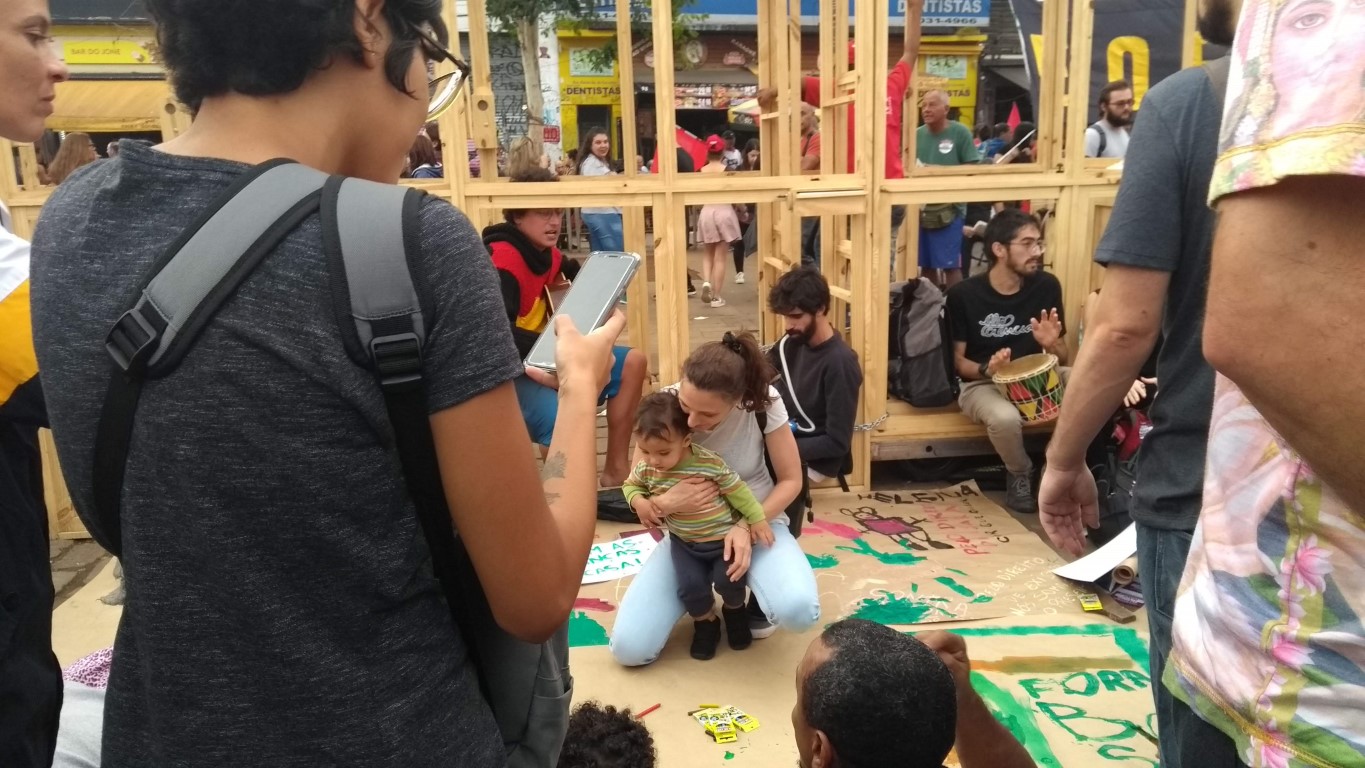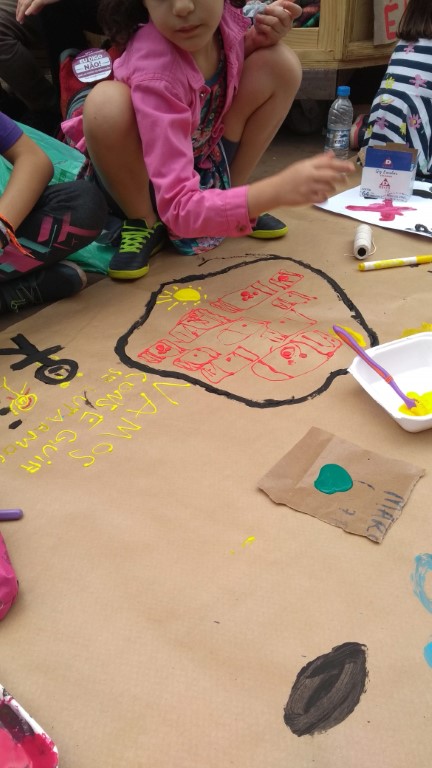desenhaço |1
for education and democracy
Children on a square, Largo da Batata, on an activity proposed by the Faculdade de Educação da Universidade de São Paulo (lit. School of Education of the University of São Paulo), performed on may 30th, 2018. Drawing and painting have become central languages in this manifestation. The public class taught by university professors brought their goals since it ‘s title “Educação ou barbárie: o compromisso do professor” (lit. Education or barbarism, the role of the professor). Alongside with the scheduled class, children, youngsters and adults drew and painted on large papers, leaning on the square floor, whose history recalls market and commercial point in the early 20th century and the indigenous population in the 16th century, among other facts.
What matters, from the pictures of this group, is the question: what is political on the act of drawing involving children, ever since babies, in a fight in defense of democracy? What is political in a “desenhaço” with children in a square located in a big urban center? It was about drawing collectively and individually at the same time and at a public space that went through sublime suspension, at the same time that it obtained the character of uprising, as in the interpretation of Georges Didi-Huberman. The drawing, as well as the painting, in this case, behaved as free resources to whomever stopped by and wanted to participate, contributing to composing narratives of a history of political struggle with children. The practice of drawing captures what is on transit and leaves behind vestiges of children in spaces, although ephemeral, kept little by little in a few pictures, in the sketches that stayed among the floors of streets and squares, on the stain of impermanent paint spread on the surfaces.
This activity added up with other acts with children and drawing, as can be seen on this website, because it carries as an intent the desire to provoke thoughts about other cities and relations among people, without forgetting about children, ever since babies. The practices of cooperation, of being together, of learning collectively were highlighted. The drawing was a motto and, at the same time, a record. Opposed to the more frantic time imposed by big cities and the capital, it’s existence allows, on the majority of times, the centering, in the pretension of contradicting short-term relationships and, who knows, creating other ways of relating to the other in a foreshadowing of establishing bonds that did not exist before.
Marcia Gobbi
1| Lit. “big drawing”, on the sense of a big reunion of people with the intent to draw. In portuguese, the suffix “-aço” indicates either a huge size of the noun before the suffix “-aço” or, recently, a big reunion of people with the intent to perform the activity (usually politically inclined) represented before the suffix “-aço” (the main example being the “panelaço”, lit. big pan, the act of hitting cooking pans by the home windows as a way to demonstrate political dissatisfaction).
